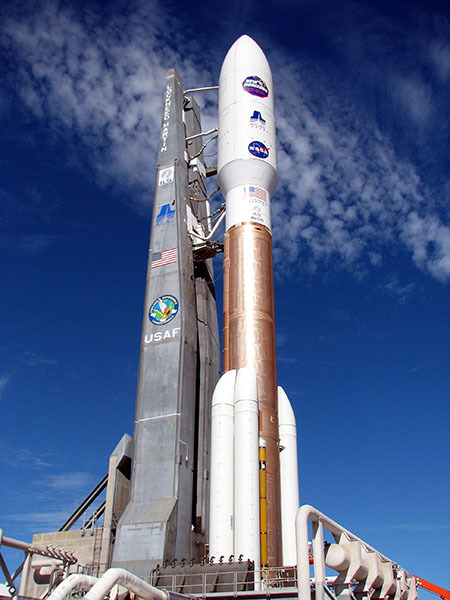New Horizons – Scientist Of The Day







New Horizons – Scientist of the Day
The New Horizons spacecraft, bound for Pluto, blasted off its launch pad aboard an Atlas V rocket on Jan. 19, 2006.
read more...
More Posts from Ad-astra-affecte-spe and Others



Lunar Occultation of Venus l Roger Hyman

For ten years the stargazer dreamed of taking a picture like this. The dreamer knew that the White Desert National Park in Egypt's Western Desert is a picturesque place hosting numerous chalk formations sculpted into surreal structures by a sandy wind. The dreamer knew that the sky above could be impressively dark on a clear moonless night, showing highlights such as the central band of our Milky Way Galaxy in impressive color and detail. So the dreamer invited an even more experienced astrophotographer to spend three weeks together in the desert and plan the composite images that needed to be taken and processed to create the dream image. Over three days in mid-March, the base images were taken, all with the same camera and from the same location. The impressive result is featured here, with the dreamer -- proudly wearing a traditional Bedouin galabyia -- pictured in the foreground.

2023 February 22
Our Increasingly Active Sun Image Credit & Copyright: Mehmet Ergün
Explanation: Our Sun is becoming a busy place. Only two years ago, the Sun was emerging from a solar minimum so quiet that months would go by without even a single sunspot. In contrast, already this year and well ahead of schedule, our Sun is unusually active, already nearing solar activity levels seen a decade ago during the last solar maximum. Our increasingly active Sun was captured two weeks ago sporting numerous interesting features. The image was recorded in a single color of light called Hydrogen Alpha, color-inverted, and false colored. Spicules carpet much of the Sun’s face. The brightening towards the Sun’s edges is caused by increased absorption of relatively cool solar gas and called limb darkening. Just outside the Sun’s disk, several scintillating prominences protrude, while prominences on the Sun’s face are known as filaments and show as light streaks. Magnetically tangled active regions are both dark and light and contain cool sunspots. As our Sun’s magnetic field winds toward solar maximum over the next few years, whether the Sun’s high activity will continue to increase is unknown.
∞ Source: apod.nasa.gov/apod/ap230222.html

Io's Close-Up by NASA's Marshall Space Flight Center

IC 2087 Taurus Molecular Cloud © Nik Szymanek









Exploration is in our nature. We began as wanderers, and we are wanderers still.
l photo: Sara Hunt l quote: Carl Sagan
Don't talk to me right now I'm thinking of the new Jupiter photos and Vincent Van Gogh:







-
 theballadofjohngeorgeandyoko reblogged this · 1 year ago
theballadofjohngeorgeandyoko reblogged this · 1 year ago -
 theballadofjohngeorgeandyoko liked this · 1 year ago
theballadofjohngeorgeandyoko liked this · 1 year ago -
 whosyourvladi liked this · 1 year ago
whosyourvladi liked this · 1 year ago -
 pigeontheoneandonly reblogged this · 1 year ago
pigeontheoneandonly reblogged this · 1 year ago -
 ad-astra-affecte-spe reblogged this · 1 year ago
ad-astra-affecte-spe reblogged this · 1 year ago -
 j-de-molai liked this · 1 year ago
j-de-molai liked this · 1 year ago -
 groundpilot13 liked this · 1 year ago
groundpilot13 liked this · 1 year ago -
 heaveninawildflower liked this · 1 year ago
heaveninawildflower liked this · 1 year ago -
 the-yearning-astronaut reblogged this · 1 year ago
the-yearning-astronaut reblogged this · 1 year ago -
 planeoftheeclectic liked this · 1 year ago
planeoftheeclectic liked this · 1 year ago -
 pigeontheoneandonly liked this · 1 year ago
pigeontheoneandonly liked this · 1 year ago -
 andromeda1023 reblogged this · 1 year ago
andromeda1023 reblogged this · 1 year ago -
 andromeda1023 liked this · 1 year ago
andromeda1023 liked this · 1 year ago -
 bibliophiliosaurus reblogged this · 1 year ago
bibliophiliosaurus reblogged this · 1 year ago -
 ornitha-rynque reblogged this · 1 year ago
ornitha-rynque reblogged this · 1 year ago -
 uwmspeccoll liked this · 1 year ago
uwmspeccoll liked this · 1 year ago -
 detroitlib liked this · 1 year ago
detroitlib liked this · 1 year ago -
 spacetimewithstuartgary reblogged this · 1 year ago
spacetimewithstuartgary reblogged this · 1 year ago -
 spacetimewithstuartgary liked this · 1 year ago
spacetimewithstuartgary liked this · 1 year ago -
 tiltedsyllogism liked this · 1 year ago
tiltedsyllogism liked this · 1 year ago -
 lindahall reblogged this · 1 year ago
lindahall reblogged this · 1 year ago

★•Astronomy, Physics, and Aerospace•★ Original and Reblogged Content curated by a NASA Solar System Ambassador
204 posts

